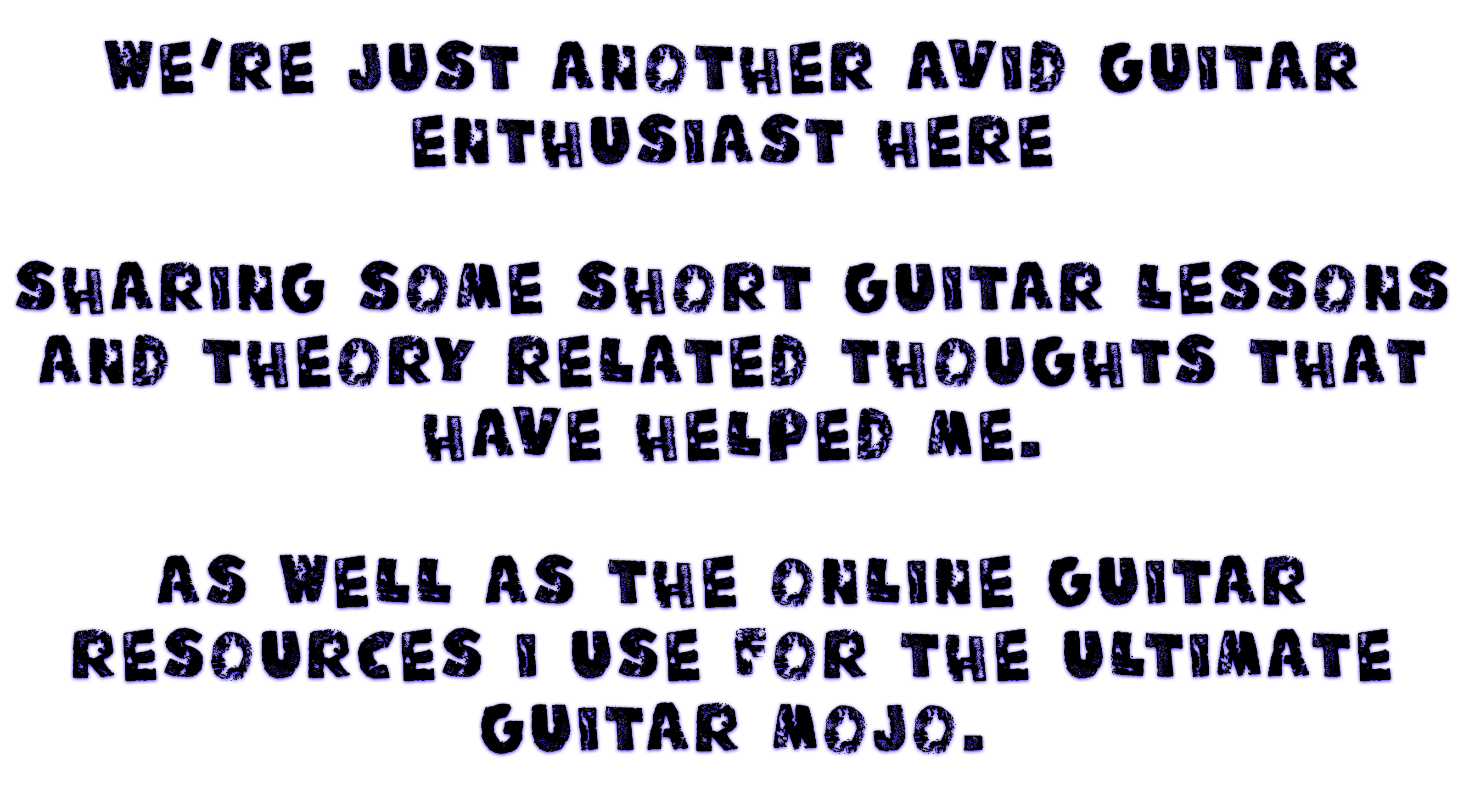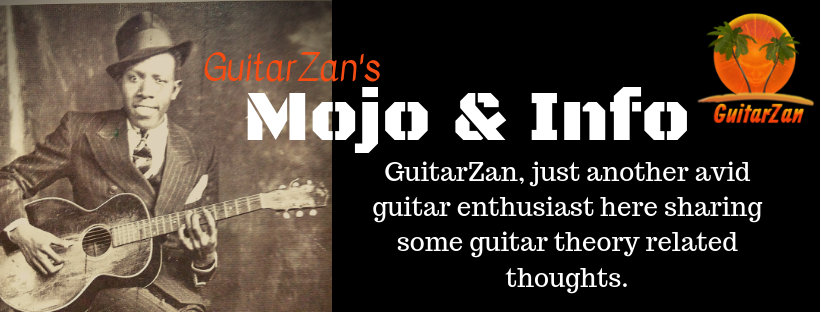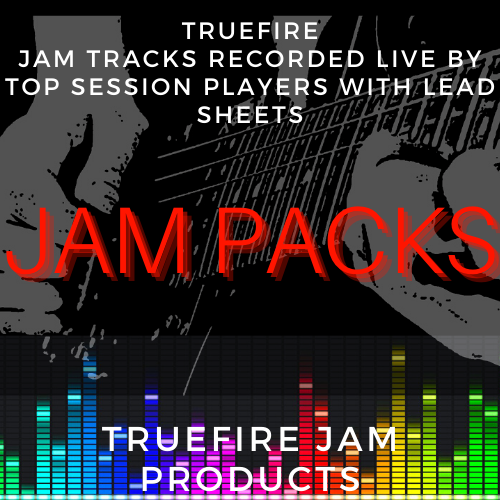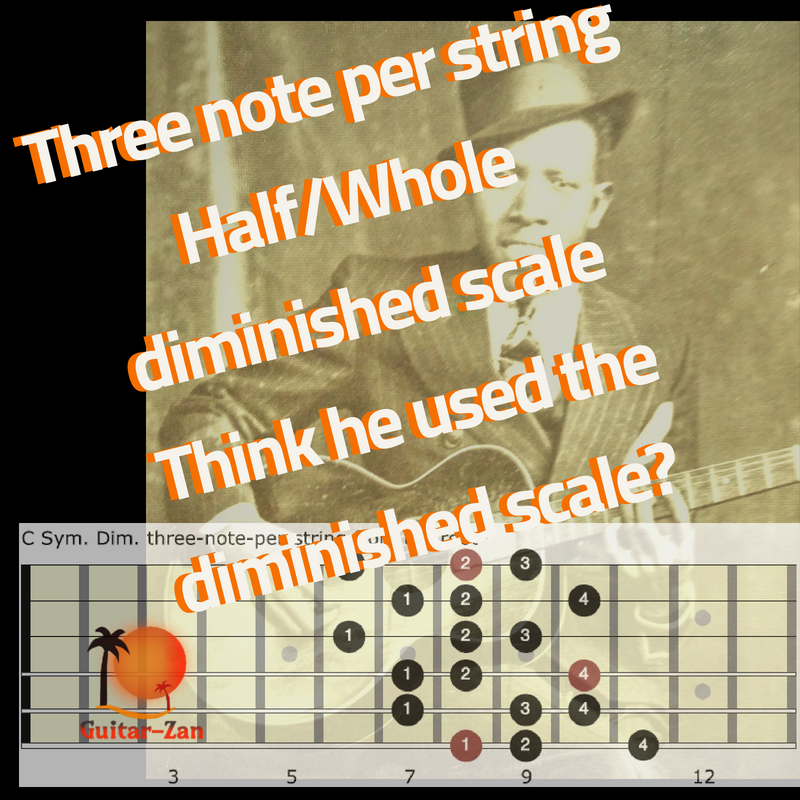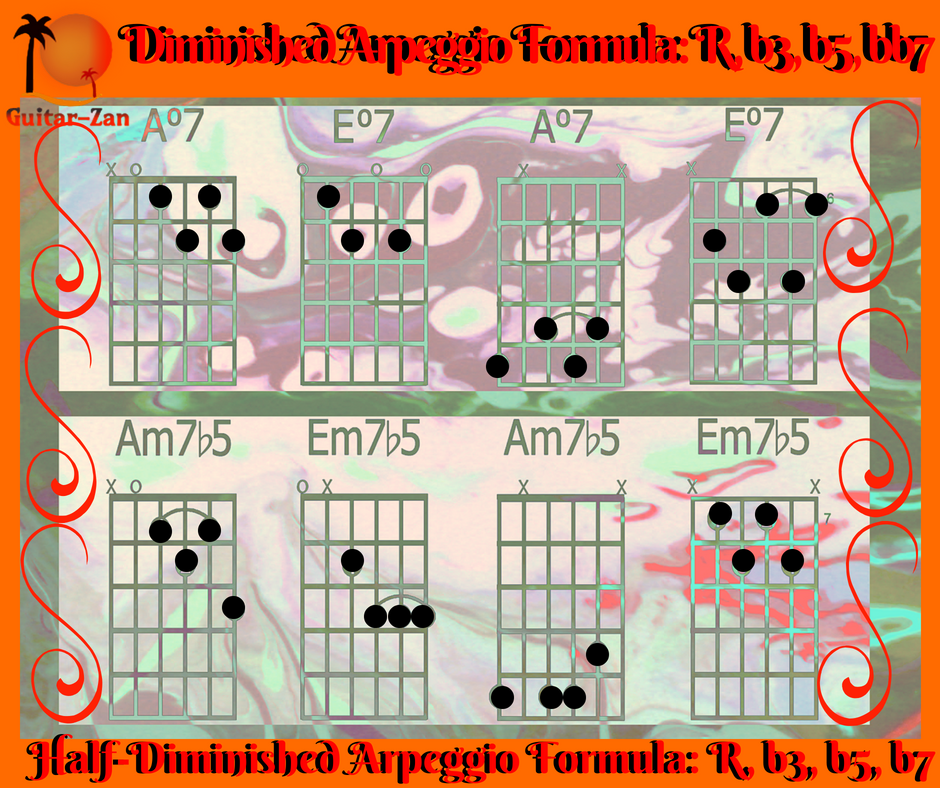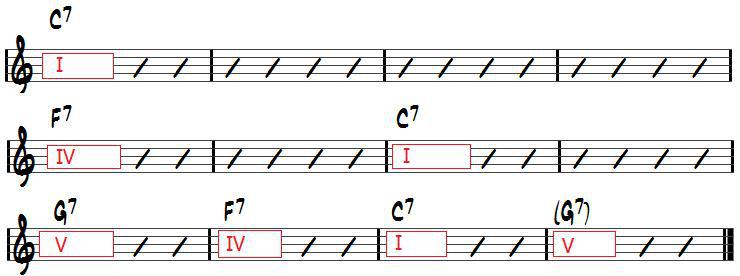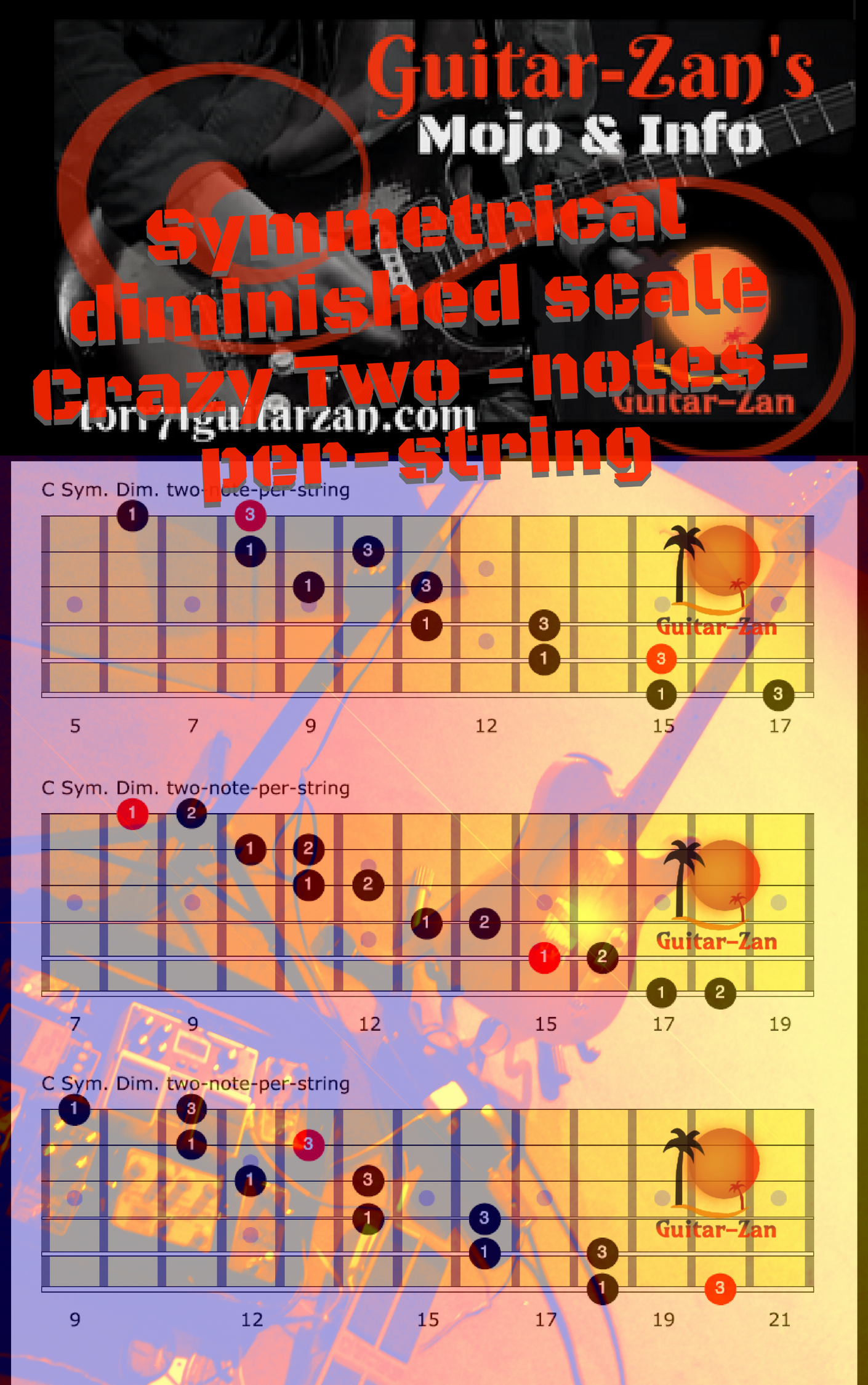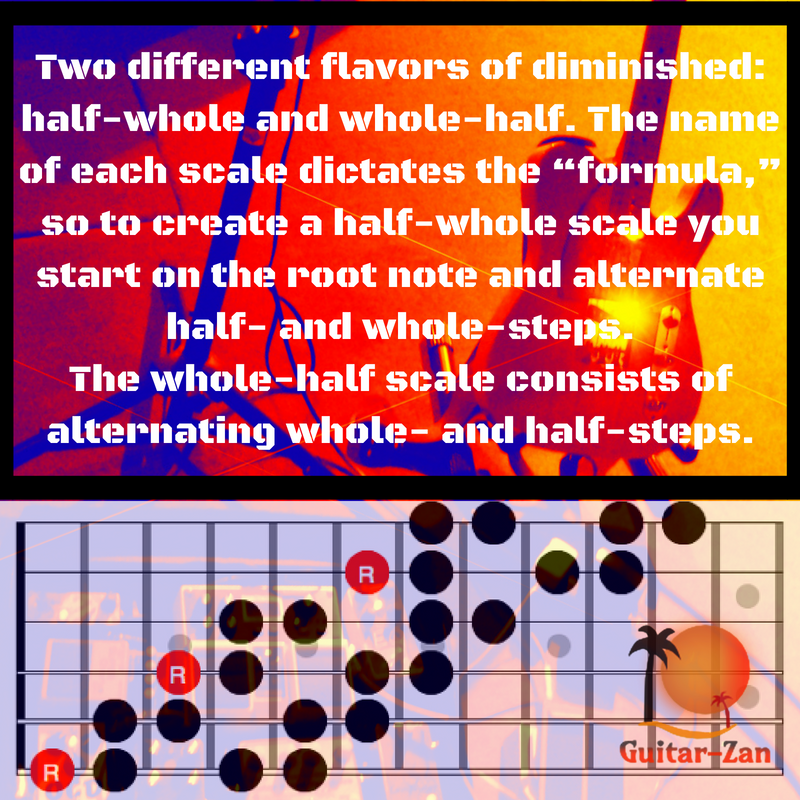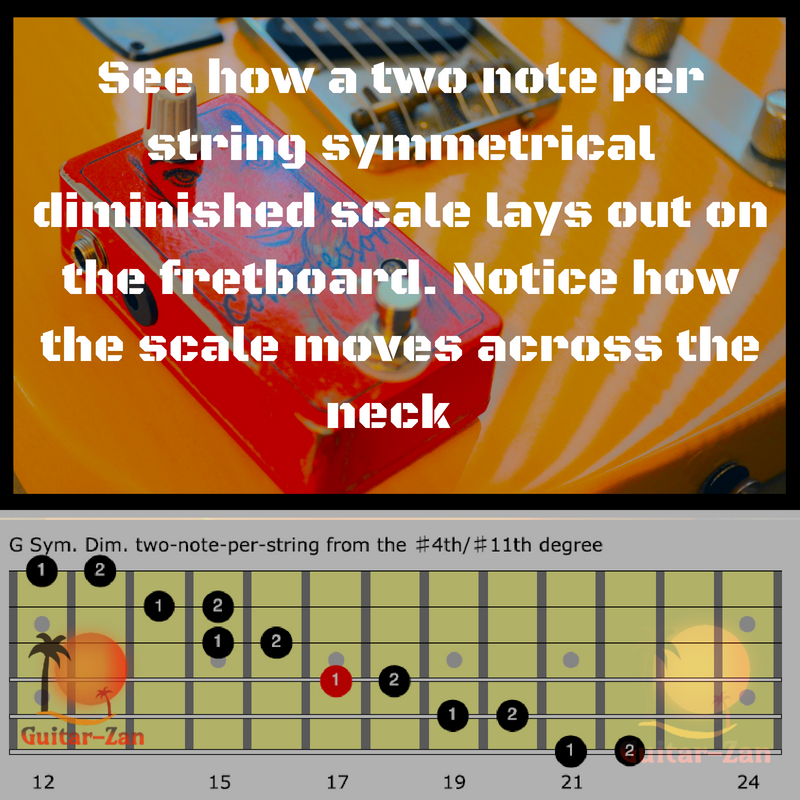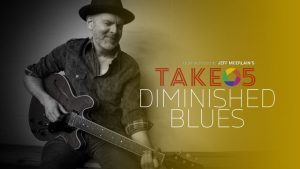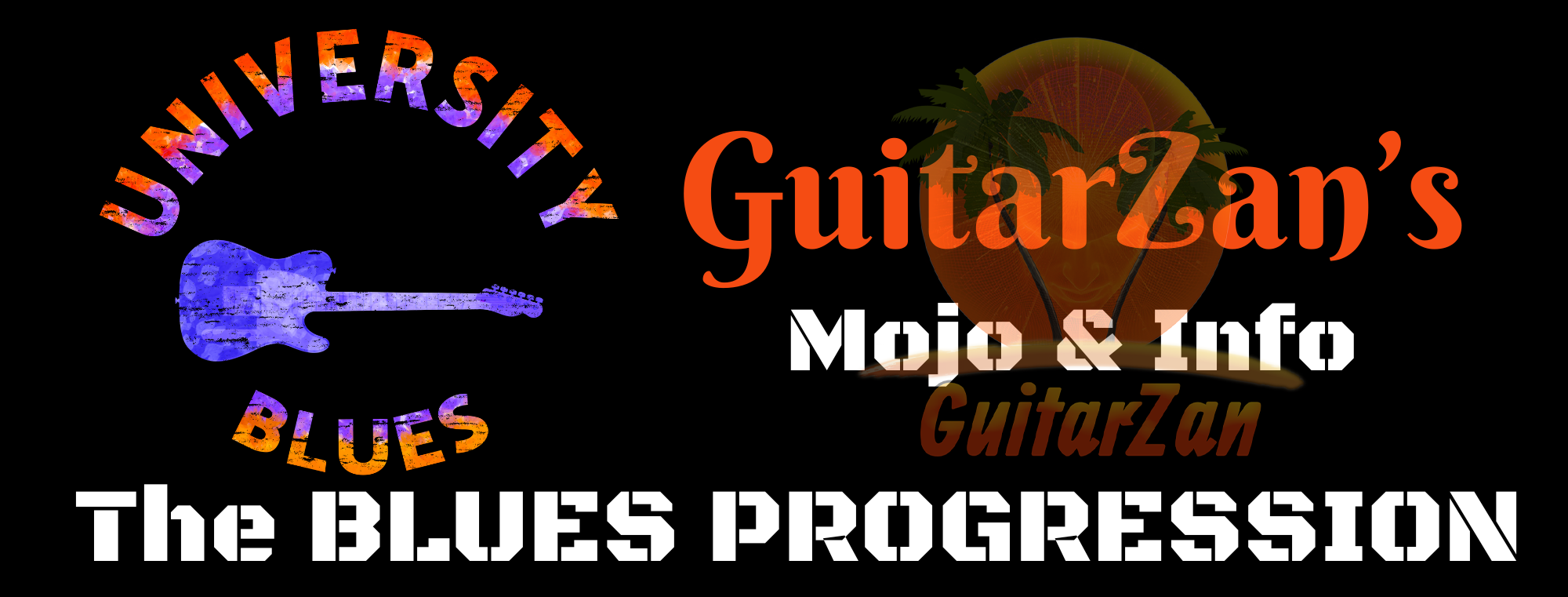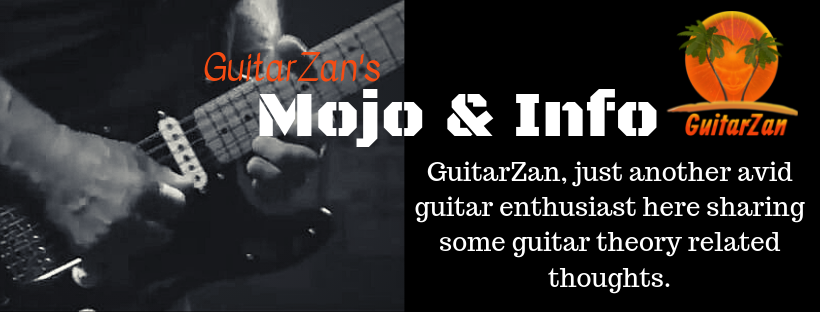The Law
Diminished Scale-The Ultimate Blues Scale
I’ve always dug the mojo and sound of Robben Ford, Larry Carlton, and more recently, Matt Schofield. Influenced by the guys like Miles Davis and such. The diminished scale is both major and minor, which is the magic mojo for the blues. The diminished scale, for me, has always had some blues to its roots. The use of the flat five and the sound of the diminished scale can really get bluesy and then some. The half-whole diminished scale and diminished 7th arpeggio are right at home in a blues setting, and we’ll be discussing ways to use them over a 12-bar blues.
The diminished scale is an 8-note scale. It's built by using a series of intervals of a whole step and half steps from any root note.
Whole-half Diminished
H W H W H W H W
Root-b2-b3-3-5b-5-6-b7
This scale is both major and minor which can be related to the blues as well as contain the b5 interval the mojo of all, for an emotional sounding scale.
The Scale
This scale has some very cool mojo going on: every note in the scale is a chord tone or alteration of a dominant chord. Another is that the scale is symmetrical in minor thirds - you can move any scale note up or down a minor third, you'll find another scale note. You can move the whole scale in minor thirds and the shape remains the same.
Any chord derived from that diminished scale is a potential substitution for an altered dominant chord.
You can mix dominant 7th and diminished 7th chords like this (from Robert Johnson’s “Kindhearted Woman Blues”). Robert didn't play the diminished scale per-say, but he did use diminshed chord mojo
Playing The Twelve Bar Blues
Working in the half-whole diminished scale with a standard 12-bar blues:
Because each chord is a dominant 7th, and you can mix dominant 7th and diminished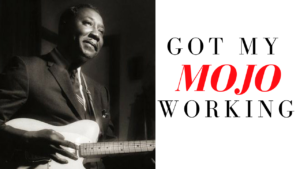 7th chords so you could use a half-whole diminished scale in every measure if you wanted, but that would be a bit too crazy. You want to use it like spice, and not so predictable. It's used best where there is a V–I chord progression or any time you go back to the I chord.
7th chords so you could use a half-whole diminished scale in every measure if you wanted, but that would be a bit too crazy. You want to use it like spice, and not so predictable. It's used best where there is a V–I chord progression or any time you go back to the I chord.
The Secondary Dominant Mojo-Jumbo
Don't be thinking “C7 to F7 ain't no V–I chord move,” and it isn’t. Not from the view of the key of C, it's not. Say that you are in the key of F where V–I is now C7 to F7. This theory mojo-jumbo sleight of hand is referred to as a secondary dominant and temporarily makes C7 the “new” V chord. It will sound like you’re modulating to a new key, but you’re actually setting up the release of tension when you get to F7.
The Turn-Around
The last phrase of blues is where all the action is. From bluesy pentatonic licks to blues trans-fusion diminished lines, there's a lot of mojo to be had. Measures 10 and 11 are another “return to the I chord” situation, Cats like Robben Ford will use a diminished 7th arpeggio pattern over that and resolve to a minor pentatonic lick.
Also, starting your phrase at the end of measure 11—half a beat early—and resolves on beat 4 of measure 12. Starting and ending your phrases before (or after) they’re supposed to, can add some good mojo feel to your phrases, don't be afraid to cross the line. This is a very cool way to create tension.
More Mojo & Info
This is the mojo of the diminished scale and how it works in the blues: Anything you can play in one place in the diminished scale, you can play all over the guitar in minor third intervals. Great Mojo!

I learned to play the diminished scale the same way that I learned to play the pentatonic scale, and thinking of it that way will be very helpful. Don't think you have to learn it some other way - it doesn't require a certain set of skills.
What's challenging about learning it beyond just learning it as you would the pentatonic scale is that the notes can sound odd. It's an altered scale, so you're altering very common tones to the human ear. First, you need to wrap your ear around those sounds in order to work it into your blues playing.
Robben Ford
These are just a few ways to use the half-whole diminished scale and diminished arpeggios over a blues. Drag out your looper, try them at different spots, and let your ear decide. Incorporate other fingerings, experiment with scale and arpeggio combinations and remember to work out resolutions to your lines. You’re probably only a half-step away from resolution.
Extra Mojo
Conclusion
If you liked this lesson, the biggest thanks, I can get is for you to like my Facebook page and leave a post with what you liked about it. As always, feel free to contact me with your questions, concerns, etc. I am here to help!
Power Your Blues Soloing with Diminished Lines
Jeff McErlain's Take 5: Diminished Blues
Great jazz-influenced guitar players like Robben Ford, John Scofield, and Scott Henderson use the diminished scale to add a fresh harmonic dimension to their blues solos and improvisations.
We’ll start the course with a quick primer on the diminished scale along with some guitar-friendly fingerings to help demystify this elusive scale and put it to work immediately in your own solos and improvisations.
I’ll then guide you through five performance studies utilizing the diminished scale to create tension and release. We’ll start with some basic approaches and work our way through to more advanced applications.
All of the performance studies are tabbed and notated and you’ll have the jam tracks to work with on your own. You can loop and slow down the videos so you can work with the lessons at your own pace.
TrueFire My Main Stay
I'm a big fan of TrueFire courses and highly recommend you check them out. They  have the best courses and educators on the planet. The Customer service is second to none, and the student forum has tons of information.
have the best courses and educators on the planet. The Customer service is second to none, and the student forum has tons of information.
Truefire is one of the most dedicated and sophisticated online guitar training programs, and they do seem to have a very decent budget to keep their content updated with a top-notch material and highly professional instructors.

